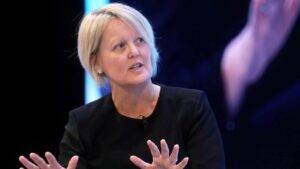What Growing Charities Get Wrong About Donor Data


When you’re running a charitable organisation, your primary focus is, understandably, on the impact you’re making. You put your energy into organising fundraising events, collecting donations, and delivering meaningful change. But what often gets overlooked is what happens after the fundraiser ends, which includes how you engage with donors and use their data.
Without continued engagement, donors may forget about your organisation or feel disconnected from the impact of their contributions. And when the next fundraising event rolls around, they might not be motivated to give again.
Many growing charities are doing the best they can with limited time and resources. But it’s easy to get caught up in the day-to-day work and forget about the very people funding it.
In this article, we’ll explore some common gaps in donor engagement and data use and share simple, actionable steps your charity can take to use donor data more effectively and build lasting relationships.
Relying on Spreadsheets for Far Too Long
Many small charities start with a single spreadsheet to track donations and supporter details. It works well at first, but can become cumbersome over time due to certain limitations inherent in spreadsheets. They don’t alert you when details are outdated or help segment donors so that you can personalise your appreciation messages to them.
However, there are some free CRM for not for profits available that can help your organisation move from spreadsheets to a more advanced system that will also help with communications.
Treating All Donors the Same
Every donor is motivated by a different story, and every supporter wants different kinds of updates. Many charities make the mistake of sending a standard emailer to all their donors, forgetting that donor relationships are a two-way street. When you don’t personalise your communications using names or referencing something about your shared past, people start to feel like just another number on a mailing list.
That’s why donor segmentation is so important for charitable organisations. A CRM system can help you craft those personalised messages that make your supporters feel valued and connected!
Forgetting to Clean and Validate the Data
It’s easy for data errors to pile up, like misspelt names, duplicate records, or outdated addresses. These small issues can lead to big problems, such as thank-you letters being sent to the wrong place or incorrect Gift Aid claims.
That’s why regular data validation and cleaning should be part of your routine. While some CRM systems can flag errors automatically, it’s still up to your team to review and fix them. Clean, accurate data leads to more effective communication and smoother fundraising efforts.
Focusing Too Much on Numbers
We know it’s tempting to create an email that highlights the impressive numbers showcasing the impact of your charity. While those statistics are important, they don’t always create an emotional connection with your donors. People want to help those in need and support the greater good.
That’s why it’s so powerful to share personal stories, like those of one family or one child, rather than just focusing on the big data. When you highlight individual experiences, you’re more likely to inspire donors to give again. So remember, balancing your impactful data with heartfelt stories can really make a difference!.
Communication Updates
Let’s say there was a past donor who no longer wishes to donate and has unsubscribed from your mailing list. Imagine their frustration when they continue to receive communications from you, even after unsubscribing years ago. They are also more likely to discourage people in their circle from donating towards your cause because of this.
While it’s always tough losing a donor, it’s still important to respect their preferences. It creates a bond of trust with the donor because they know you’re listening.
Using Data Without an Approach
Donor data shouldn’t just sit in a system waiting for someone to look at it. If you’re not using it to understand trends, spot lapsed donors, or evaluate which campaigns are working best, then you’re missing out on huge opportunities. This data should help you make fundraising decisions.
You can find answers to questions like ‘what is the average time before people disengage?’ and ‘what’s the best time of the year to ask for support?’ simply by analysing the data.
Summing It Up
Managing donor data is probably not one of your top priorities when you’re running a charitable organisation because all your efforts are directed towards helping real people. That said, using your donor data wisely doesn’t need to divert your attention from your core mission.
When you make these small changes to the way you handle donor data, you’ll form stronger donor relationships and carry out more impactful fundraising. Initially, it might feel like a lot of effort, but you’re building towards a more sustainable relationship with your donors.
Read more:
What Growing Charities Get Wrong About Donor Data






